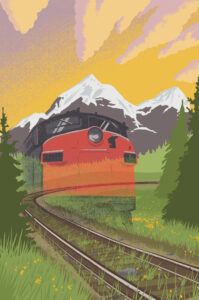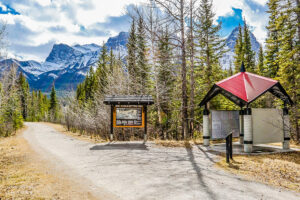
People & Culture
Losing track: The importance of passenger rail corridors
What does it mean for Canada if we continue to pull up train tracks?
- 4438 words
- 18 minutes
This article is over 5 years old and may contain outdated information.
History

On November 7, 1885, the last spike of the Canadian Pacific Railway was hammered into the ground in B.C., signaling the end of the railway’s construction and the advent of passenger travel in Canada.
Championed by Sir John A. MacDonald, the CPR was a symbol of national unity — and Canada’s engineering prowess — spanning more than 4,000 kilometers from Montreal to Port Moody, B.C. and helping to connect the country from east to west.
Seventy years later, rail travel in Canada was in sharp decline. Cars and buses were commonplace and air travel was becoming cheaper and more fashionable. Rail companies had to offer a different experience for passengers, or be left in the dust. In 1955, CPR launched its new flagship train, The Canadian, which had daily service and ran between Montreal and Vancouver via the Canadian Rockies.
In the March 1955 issue of the Canadian Geographical Journal, the company ran a full-colour double-page advertisement, sandwiched between a Chevrolet ad and an Oldsmobile ad, describing the service as “Canada’s first and only stainless steel Scenic Dome streamliner.” The ad boasted, “ Now you can see 2,881 miles of scenic beauty on the longest Dome ride in the world!” While the passenger train showed initial success, the ridership began to decline in the 1960’s as air travel became the preferred method of long-distance travel.
Today The Canadian still whisks passengers across the country in style, but is now owned by Via Rail, which purchased the struggling train in the late 1970’s, and offers a longer ride (four nights instead of three) a few days per week.
Are you passionate about Canadian geography?
You can support Canadian Geographic in 3 ways:

People & Culture
What does it mean for Canada if we continue to pull up train tracks?

Science & Tech
Celebrating Canadian Innovation Week 2023 by spotlighting the people and organizations designing a better future

Travel
The trail started with a vision to link Canada coast to coast to coast. Now fully connected, it’s charting an ambitious course for the future.

Travel
The new movement building flourishing tourism hubs across Canada – one sustainable example at a time